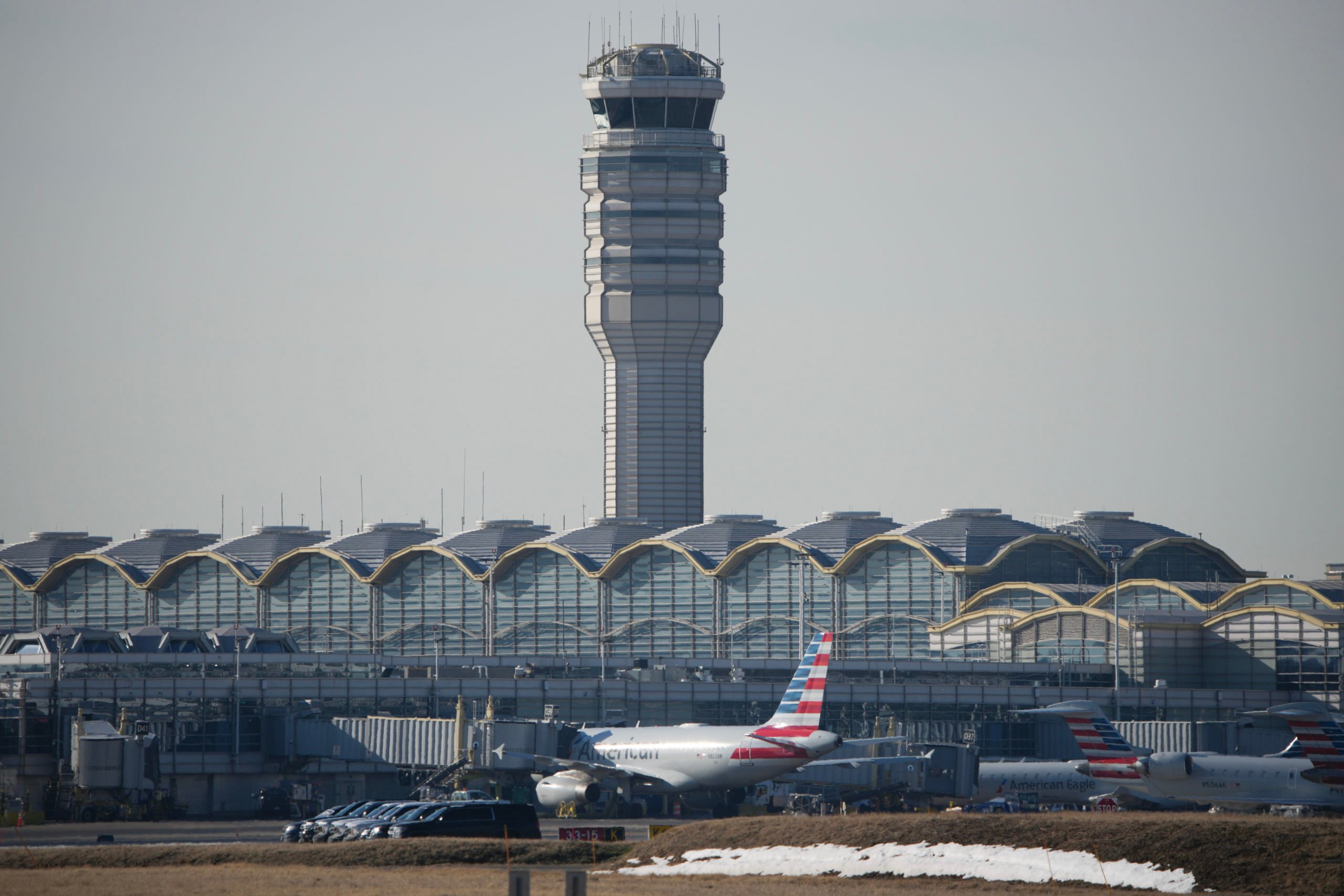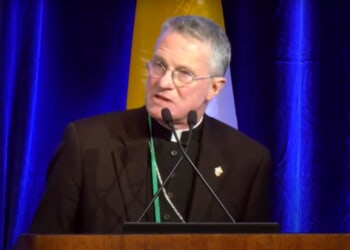A U.S. Army Black Hawk helicopter flying through restricted Washington, D.C. airspace on Thursday triggered urgent evasive maneuvers by two commercial jets inbound to Reagan National Airport.
An American Airlines jet collided with a military Black Hawk helicopter near Reagan National Airport on Jan. 29, killing all 67 people aboard both aircraft. Just four months after the deadly incident, it was reported that an Army chopper deviated from its approved flight path, veering around the Pentagon instead of heading directly to the helipad, according to a Friday email from Federal Aviation Administration (FAA) Assistant Administrator Chris Senn, obtained by POLITICO.
The unexpected turn prompted air traffic controllers to order go-arounds for a Delta Air Lines flight and a Republic Airways flight already on final approach. Although go-arounds are not unusual at the busy airport, the FAA classified Thursday’s incident as a “loss of separation,” a serious breach of federal air traffic safety standards.

ARLINGTON, VIRGINIA – JANUARY 30: The control tower at the Reagan National Airport after the crash of an American Airlines plane on the Potomac River on approach to the airport on January 30, 2025 in Arlington, Virginia. (Photo by Andrew Harnik/Getty Images)
The two civilian aircraft were brought dangerously close to the helicopter, less than a mile and 400 feet in one case, and just 0.4 miles and 200 feet in the other, Politico reported. The Army Black Hawk was transmitting data via its ADS-B (Automatic Dependent Surveillance–Broadcast) system, unlike the one involved in the January crash, in which investigators suspect the system was switched off.
The danger escalated when the helicopter’s radar track temporarily glitched on controllers’ screens, delaying their ability to monitor its exact position. The Reagan control tower was fully staffed during the incident, including a supervisor, four certified professional controllers and a trainee under instruction. FAA officials said an investigation is underway to determine whether the Army violated any flight protocols. The National Transportation Safety Board (NTSB) is also reviewing the event.
Thursday’s close call revived concerns from the Jan. 29 disaster that highlighted gaps in military-civilian airspace coordination, especially around inconsistent use of tracking technology. It was reported that the pilot of a U.S. Army Black Hawk failed to change course before colliding with a passenger jet. (RELATED: ‘Accident Waiting To Happen’: Feds Ignored DC Death Trap For Years Despite Dozens Of Near Misses With Planes, Choppers)
Reagan National Airport has had several accidents, including one in April when a plane clipped the wing of another aircraft carrying two U.S. representatives. Investigators say the Army pilot flying the Black Hawk failed to maintain a lower altitude and may have missed air traffic instructions due to overlapping radio transmissions.
The FAA and NTSB both did not immediately respond to the Daily Caller News Foundation’s requests for comment.
All content created by the Daily Caller News Foundation, an independent and nonpartisan newswire service, is available without charge to any legitimate news publisher that can provide a large audience. All republished articles must include our logo, our reporter’s byline and their DCNF affiliation. For any questions about our guidelines or partnering with us, please contact licensing@dailycallernewsfoundation.org.


![Stephen Miller Announces New Goal for ICE Mass Deportation Effort [WATCH]](https://www.right2024.com/wp-content/uploads/2025/05/Stephen-Miller-Announces-New-Goal-for-ICE-Mass-Deportation-Effort-350x250.jpg)




![Fans Shocked as Katy Perry Stops Concert After She’s Ambushed by Deranged Fan Onstage [WATCH]](https://www.right2024.com/wp-content/uploads/2025/06/Fans-Shocked-as-Katy-Perry-Stops-Concert-After-Shes-Ambushed-350x250.jpg)
![LA Protest Casualty? Dead Body Found as Riots Stretch Into Fifth Night [WATCH]](https://www.right2024.com/wp-content/uploads/2025/06/1749642627_LA-Protest-Casualty-Dead-Body-Found-as-Riots-Stretch-Into-350x250.jpg)


![Soros Network, Others Behind LA Riots [WATCH]](https://www.right2024.com/wp-content/uploads/2025/06/Soros-Network-Others-Behind-LA-Riots-WATCH-350x250.jpg)





